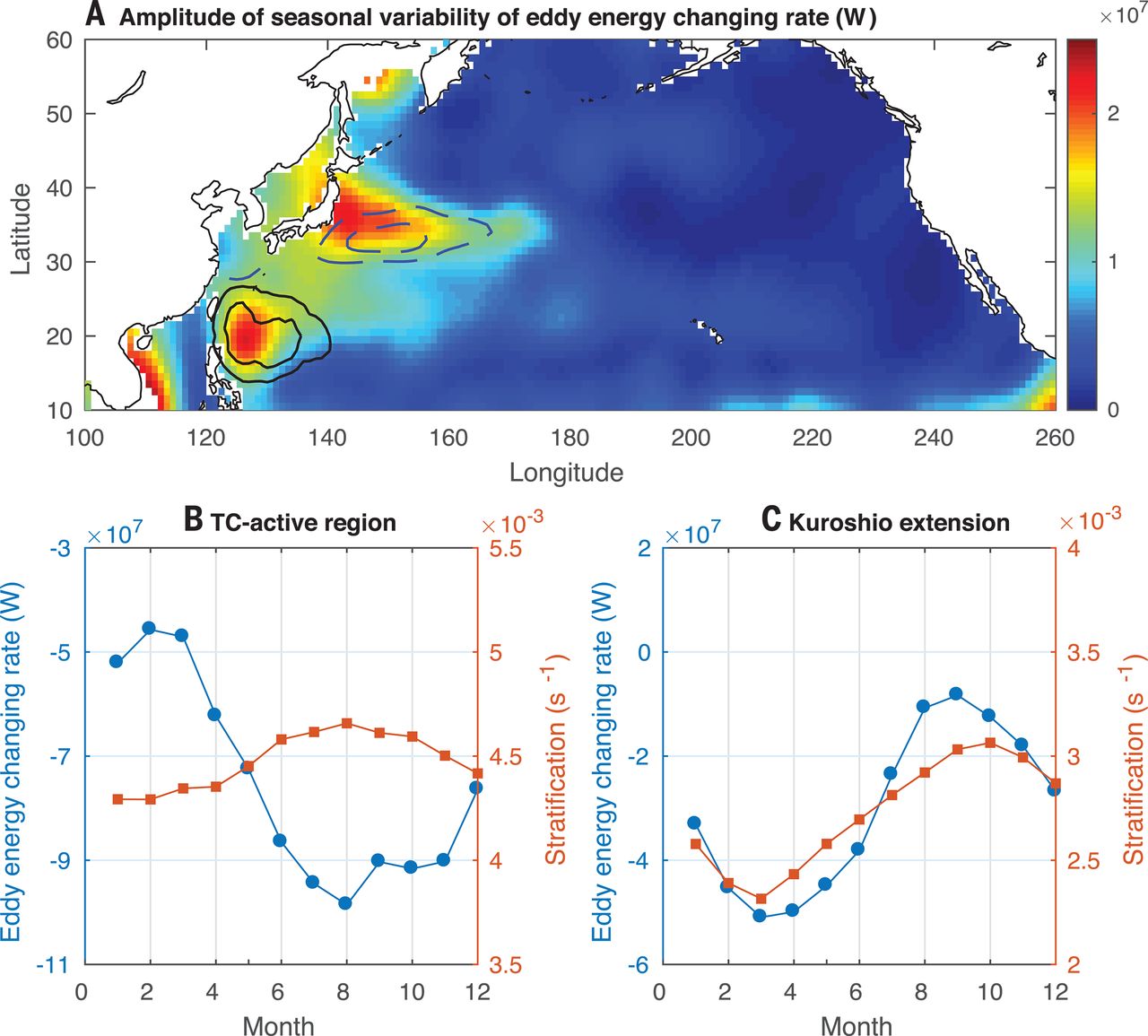Yu Zhang, Zhengguang Zhang, Dake Chen, Bo Qiu, Wei Wang
Published in Science 29 May 2020
A positive feedback mechanism between tropical cyclones (TCs) and climate warming can be seen by examining TC-induced energy and potential vorticity (PV) changes of oceanic geostrophic eddies. We found that substantial dissipation of eddies, with a strong bias toward dissipation of anticyclonic eddies, is directly linked to TC activity. East of Taiwan, where TCs show a remarkable intensifying trend in recent decades, the ocean exhibits a corresponding upward trend of positive PV anomalies. Carried westward by eddies, increasing numbers of positive PV anomalies impinge on the Kuroshio current, causing the mean current to accelerate downstream. This acts in opposition to decreasing basin-scale wind stress and has a potentially important warming impact on the extratropical ocean and climate.

Fig. Seasonal variation of eddy energy changing rate.
(A) Seasonal variation amplitude of eddy energy changing rate in the North Pacific Ocean (color scale). TC intensity, defined as annual accumulated power input of TCs to the ocean, ∑v3 (where v is the local instantaneous wind speed from the Best Track Dataset of Tropical Cyclones), is shown as solid contours. Seasonal variation amplitudes of oceanic stratification are shown as dashed contours. See supplementary materials for details. (B and C) Seasonal variation of eddy energy changing rate (blue) as compared with seasonal variation of oceanic stratification (red) in the TC-active region (120° to 130°E, 20° to 30°N) (B) and the Kuroshio Extension region (C). A 3-month running mean smoothing was applied to the time series.
Zhang, Yu & Zhang, Zhengguang & Chen, Dake & Qiu, Bo & Wang, Wei. (2020). Strengthening of the Kuroshio current by intensifying tropical cyclones. Science. 368. 988-993. https://doi.org/10.1126/science.aax5758.